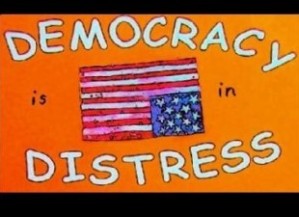Before proceeding with the post, we first define what Investigative Journalism is. According to Jones (2009), investigative journalism is referred to as the most difficult type of journalism and is ranked at the top of the reporting chain. As Daniel and his group mates have put forward during the seminar presentation, it is not only time-consuming and dangerous, it also requires great expertise. Investigative journalism includes revealing corruption, especially in governmental and officials’ levels and scrutinizing the neglected corners of the society. It exemplifies the common ideal of the news media being the fourth estate which plays the role of a watchdog for the society.
Furthermore, Jones (2009) also added that investigative journalism should always be done “in the face of efforts to keep information secret” (p. 5). One quote that I came across while researching about investigative journalism is from John Pilger, one of those who covered the Vietnam War and felt disdainful about the way British media actually covered foreign stories in the 1990s. He said,
Investigative journalists are people who should lift rocks, look behind screens, never accept the official point of view or never believe anything until it is officially denied. The ‘Pentagon Papers’ and the ‘My Lai massacre’ stories told you how the US war system was working; they revealed how people manipulated that system to cause such havoc. If the Kosovo bombing had happened in the 1960s journalists would have investigated how it came about and whose interests it serves; today the British press is degraded by its ludicrous drum beating and rhetorical jingoism (Pilger, 1999, as cited in Burgh, 2000, p. 294).
Also, integral to the concept of investigative journalism is that it is the kind of news that influential people do not want the public to be aware of. One example provided by Daniel and his group mates during the seminar presentation is the My Lai massacre by one of the greatest investigative reporters, Seymour Hersh. Below is a video on the My Lai massacre.
Because the truth was hidden from the community for so long until Seymour Hersh uncovered the real fact, there were a lot of commotions by the public. Instead of coming clean with the truths, the first few reports stated that they killed enemies when innocent people were in fact the ones who were killed by the army. Thus, the need for investigative journalism is significant so that these journalists can uncover such hidden truths and provide the facts for the public.
Hence, there is definitely pride in investigative journalism because being able to get hidden information for the sake of public interest is in fact hard to come by.
(451 words)
References
Burgh, H. (2000) Investigative Journalism: Context and Practice. London: Routledge.
Jones, A. S. (2009) Losing the News: The Future of the News that Feeds Democracy. New York: Oxford University Press, Inc.











